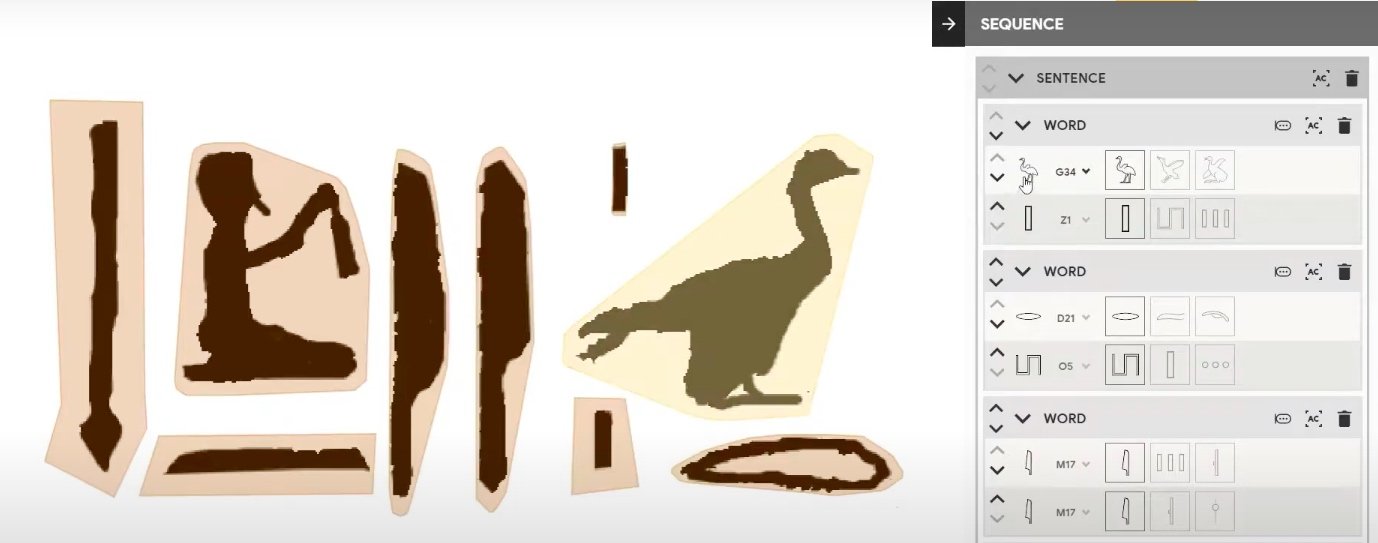© 2000-2023 - Enkey Magazine - All rights reserved
ENKEY SNC - VAT ID IT03202450924 / REA Code CA253701 - Phone. 078162719
It was the 1799 when the Rosetta Stone was discovered, one between the biggest mysteries of the archaelogy, thanks to which it was possible to translate the hieroglyphs and to discover many secrets of the ancient Egypt. It isn’t a case that Google launches its new tool right for the occasion of the anniversary of its discovery. It is Fabricius, a platform which is able to translate the hieroglyps.
Google launches Fabricius!
Are you passionated of ancient writings and, especially of the ancient egyptian hieroglyps, and you would like to decrypt them and, maybe, to make real messages by using this kind of language? So Fabricius is what you need.

Fabricius is the first platform to translate hieroglyps. At the moment it is available only in the versions english and arabian, but probably it will soon arrive in other languages. If you want, anyway, to try to translate the writing of the ancient Egypt you can choose a double translation.
Google says that the hieroglyps can be compared with the today’s emoji, to which is given a meaning. Every symbol of the ancient egyptian language, as well as the emojis, has a meaning and together they can create real sentences.
Fabricius takes the name from the father of the hieroglyps translation: Johann Albert Fabricius. He was a bibliographer and a book-keeper who lived in the Germany of the seventeenth and eighteenth century. The german book-keeper is considered as the father of the historiography.
The new platform and the Rosetta Stone
Who doesn’t know what the Rosetta Stone is? It is the biggest mystery of the archealogy. It is a block of granite discovered in the 1799 during a napoleonic expedition.

Before that moment no one was able to translate the ancient egyptian language, if not theoretically. But on the Rosetta Stone there was an engraving, written in three different languages: hieroglyps, demotic, one of the last phases of the egyptian language, which was mainly used by the people, and greek.
The engraving was a dedication to the king Tolomeo V Epifore, but who did write it? Who was able to write all three languages?
Fabricius is double stranded to the Rosetta Stone. It is able to speak many languages too. At the moment three, as well as the Stone: hieroglyps, arabian and english.
Three are even the functions that Fabricius offers:
- Learn: the first one is the educational one, where, through six steps, we learn the history of the hieroglyps and how to read them.
- Play: with the second function we can translate the hieroglyps in english, by creating words and messages, to share with our friends.
- Work: finally, the last section is the academic one. Thanks to the machine learning the researchers have the possibility to automatically translate them, in detail.
How does Fabricius work
Fabricius is an open source, published even on Github, to be used in the research in the field of the ancient languages.

To its realization worked the australian center of egyptology of the Macquarie Univesrity, the Ubisoft and many egyptologists from all over the world.
The idea arrived during the development of Assassin’s Creed Orygins, the videogame settled right in the ancient Egypt. They so felt the necessity to create quick and autonomous way to translate the ancient languages, in this case the language of the egyptian hieroglyps.
Fabricius uses AutoML Vision by Google Cloud, with which the machine is able to recognise all types of objects. In the past, explain the experts, they needed a team of data scientists, a lot of codes, but especially a lot of time.
Besides to know and to translate the ancient egyptian language, in Fabricius we can discover many secrets about the ancient civilization. Like the King Tutankhamun, The Ghiza’s Pyramid, the deaths’ book. Inside it we find even collections about the Ancient Egypt ready to be used, for example, during a Classroom.
This post is also available in:
 Italiano
Italiano

